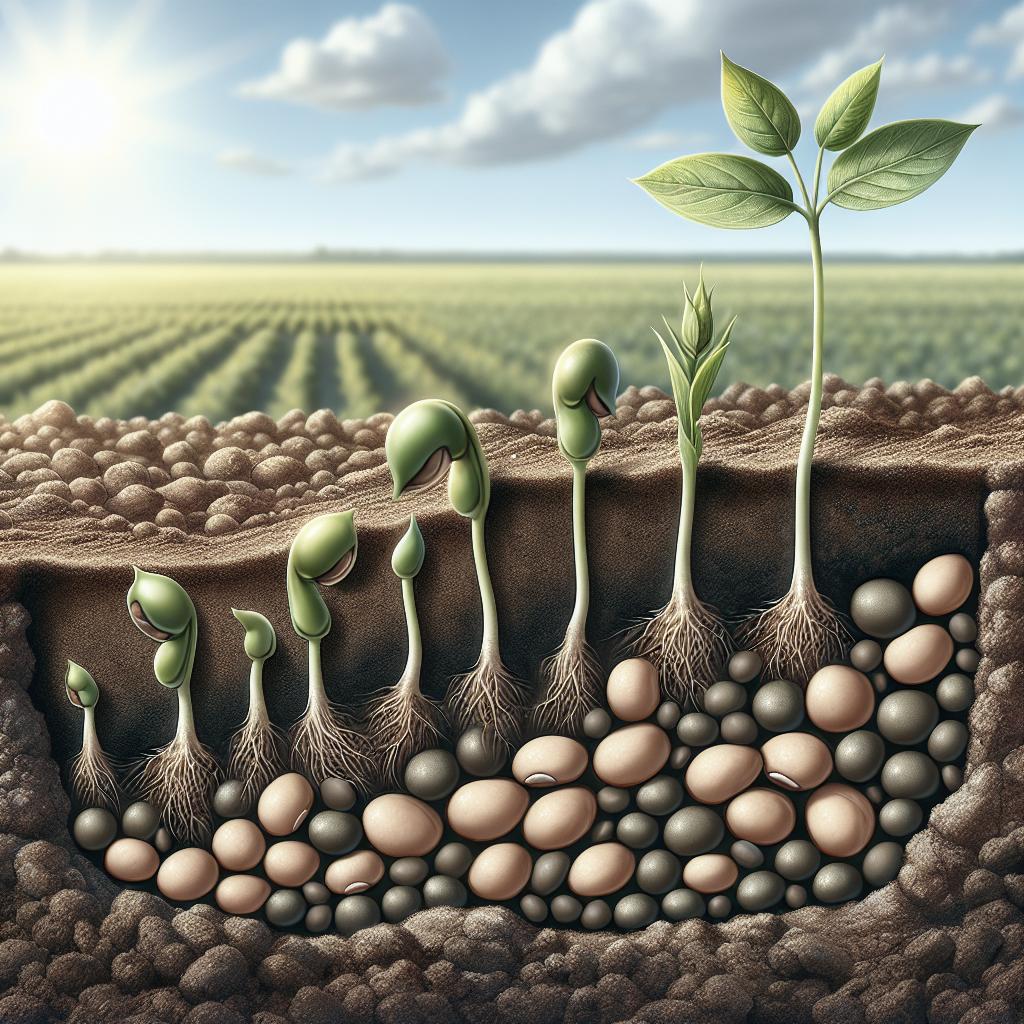In a world rapidly concerned with climate change and sustainability, understanding the growth process of trees is more vital than ever. This blog post delves into how long it takes for trees to grow, exploring the various stages of their development and the factors influencing their growth rate. We will cover the easy identification of birch tree leaves, delve into the tree growth stages from seed germination to maturity, and investigate what makes some trees grow faster than others. We’ll also discuss the pros and cons of quick growth and suggest five fast-growing trees ideal for planting in your yard. Whether you’re a gardener, environmental enthusiast, or a curious mind, this comprehensive guide offers valuable insights to enhance your understanding of tree growth.
10 Birch Tree Leaves: Easy Identification Trick & Full Chart of All Leaves
Identifying birch tree leaves can be a pleasant and educational task, especially if you are an enthusiast of dendrology (the study of trees). The leaves of birch trees are generally small, oval, and pointed, often resembling spearheads. The edges of these leaves are serrated or toothed, making them quite distinctive. An easy way to identify birch leaves is by their unique pattern and venation. Birch leaves often feature a symmetrical form with a noticeable midrib and lateral veins extending towards the serrated margins. They come in various shades of green during their growing phase, transitioning to vivid yellows in the fall. Having a full chart handy that includes various birch species, such as White Birch, Silver Birch, and River Birch, can aid in accurate recognition.
Tree Growth Stages
1: Seed Germination
Seed germination is the initial phase in the life of a tree. This process begins when a seed absorbs water, causing it to swell and break its outer shell. Various factors like temperature, moisture levels, and light conditions must align perfectly for germination to occur. During seed germination, biochemical processes are activated, stimulating the seed to grow roots (radicles) and shoots (plumules). This stage is crucial, as it sets the foundation for the tree’s future development. Germination rates and timings vary across species, but typically, it takes from a few days to several weeks for this stage to complete.
2: Seedling and Sapling Stage
Following germination, the tree enters the seedling stage, which can last anywhere from 1 to 5 years. During this period, the tree develops its initial set of leaves, enhancing its photosynthesis capability. Seedling trees are often delicate and require ample water, light, and nutrients to survive. As the tree progresses to the sapling stage, it will exhibit more defined growth characteristics, such as developing a sturdy trunk and an extensive root system. This phase usually spans from 5 to 15 years, during which the tree grows taller and continues to establish its structural foundation. Careful monitoring and maintenance are essential during this period to ensure the tree’s healthy transition to maturity.
Mature or Fruit-Bearing Tree
The mature stage is when a tree achieves its full height and width and can span decades to centuries, depending on the species. This is the phase where the tree is most productive in terms of photosynthesis and carbon sequestration. Many trees also start to bear fruits or seeds, contributing to biodiversity and ecological balance. Mature trees play critical roles in their ecosystems, offering habitat and food for various flora and fauna. Human planning for urban forestry or garden landscapes should consider this stage to maximize ecological and aesthetic benefits. Regular pruning and health assessments are vital to maintaining the tree’s longevity and productivity.
Factors that Affect Tree Growth
Various factors influence how quickly a tree grows, including environmental conditions and genetic predisposition. Soil quality is fundamental, as it provides essential nutrients and physical support. Trees grow best in soils rich in organic matter and with balanced pH levels. Climate also plays a critical role; factors like temperature, rainfall, and sunlight significantly impact growth rates. For instance, tropical trees often grow faster than those in temperate regions due to the abundance of warmth and moisture. Lastly, human interventions such as pruning, fertilization, and pest control can either enhance or hinder growth.
How to Make Trees Grow Faster?
If you’re looking to accelerate the growth of your trees, several practices can help. Ensuring optimal soil conditions is one of the most significant factors. Conduct a soil test to understand its nutrient profile and amend it with organic compost if necessary. Planting trees in locations where they can receive maximum sunlight will also foster quicker growth. Additionally, regular watering and mulching can help retain soil moisture and prevent weeds. Using slow-release fertilizers can provide a steady nutrient supply, promoting robust and healthy growth.
The Cons of Quick Growth
While it may be tempting to encourage rapid tree growth, there are downsides to consider. Trees that grow too quickly can have weaker wood, making them more susceptible to breakage during storms. Such trees often have shallow root systems, risking uproot during high winds. Rapid growth also makes trees more vulnerable to pests and diseases, compromising their health and longevity. Therefore, it’s crucial to balance the desire for quick growth with practices that ensure the tree’s long-term stability and resilience.
Five Trees That Grow Fast to Plant in Your Yard
If you’re keen on adding fast-growing trees to your yard, you have several great options. The Weeping Willow is known for its rapid growth and can reach impressive heights within a few years. This tree adds aesthetic value and offers substantial shade. The Silver Maple is another fast-growing tree, achieving significant height in a relatively short period. However, its wood is somewhat weak, warranting cautious planting locations. The Leyland Cypress grows quickly and is excellent for use as a privacy screen or windbreak. The Hybrid Poplar and Eastern Cottonwood are also among the fastest-growing trees and are perfect for quickly creating a green canopy. These species offer excellent environmental benefits through carbon sequestration and habitat provision.
Need Tree Care? We’re here for you.
Proper tree care is essential for ensuring the health and longevity of your trees. Whether you’re dealing with young saplings or mature giants, professional tree services can offer valuable support. From soil testing and specialized fertilization to pest management and pruning, expert help can make a significant difference. If you’re looking for guidance or services tailored to your specific needs, don’t hesitate to reach out. High-quality tree care ensures that the trees in your garden or yard thrive, contributing to environmental sustainability and natural beauty. Future prospects:
| Aspect | Description |
|---|---|
| 10 Birch Tree Leaves | Easy identification trick and a full chart of all leaf types. |
| Tree Growth Stages | Details about seed germination, the seedling and sapling stages, and maturity. |
| Factors that Affect Tree Growth | Soil quality, climate, and human interventions. |
| How to Make Trees Grow Faster? | Optimal soil conditions, sunlight exposure, watering, and fertilizing tips. |
| The Cons of Quick Growth | Weaker wood, shallow root systems, and increased vulnerability to pests. |
| Five Trees That Grow Fast | Recommendations for fast-growing trees like Weeping Willow and Silver Maple. |
| Need Tree Care? | Professional tree care services for maintaining tree health and longevity. |
Understanding tree growth and the factors that influence it can significantly benefit your gardening efforts and environmental contributions. From identifying birch leaves to selecting fast-growing species for your yard, a holistic approach to tree care ensures a greener and more sustainable future.


